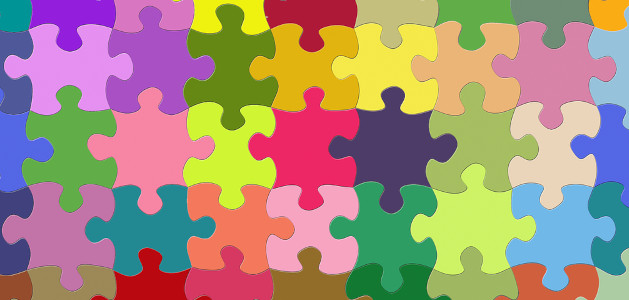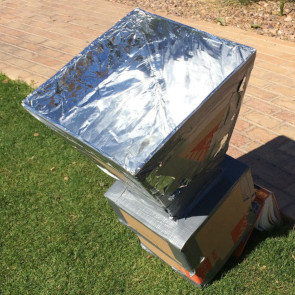
Helping students question, think, and work together to apply learning

In an age of high-stakes and constant testing, education has come to mean knowing answers. Project-based Learning, or PBL, is about learning how to ask great questions in order to think more deeply about an issue and solve complex problems.
Project-based learning and doing "projects" are often used interchangeably, but these are two very different approaches to learning and to instruction.
A project is something students do after learning content in order to demonstrate understanding. While many performance tasks are designed to require student work that connects to the "real world" the resulting work is still a project.
Project-based learning is different. In a project-based learning approach, students are presented with a problem or issue strongly connected to the world beyond the classroom. In the process of exploring and engaging with the issue, students learn content and skills because they are needed in order to solve the problem or address the issue.
While projects can be highly engaging and motivating, they can also be highly teacher-directed. Projects that include directions like, "Slide 4 should contain..." may result in projects that are high-quality, but often all student thinking (and deep learning) has been removed. Project-based learning is a bit more messy.
Educators have been using a project-based approach for almost 50 years now. It has recently come back into popularity due to the ideas of students becoming "college and career ready." In order to thrive in our rapidly changing world, students need to know both the 3R's and the 4C's. A project-based approach to learning can help educators engage students in thinking deeply about content, while also learning essential critical thinking, communication, and collaboration skills.
Project-based learning connects students to their learning in ways that traditional instruction often doesn't. Because they are doing work done by or for someone outside the classroom, students see the value of their efforts. Because their work goes beyond the purely academic, it addresses the question of "Who cares?"
Project-based learning also provides an opportunity for students to apply knowledge to solve a problem, think more deeply about content, and learn to ask questions because they are necessary to solve a problem.
Many classrooms studying heat energy end the unit with a "make a solar oven" project. While students tend to enjoy this hands-on activity, most students end up following provided directions and using provided materials to make their oven. Designs are almost always similar across a classroom and students make a solar oven as a one time project, not as a stepping stone to engaging with heat energy. While they may have succeeded in cooking something, they don't develop a deep understanding of how and why it worked
A project-based approach might include a similar activity as an entry event or first step in the exploration of heat energy. Students are tasked with using solar energy to bake a cookie. Because the teacher isn't providing all of the information and directing their work, students have to ask questions that require them to learn information about heat energy, reflective surfaces, heat transfer and much more. The teacher may connect them to the information, but only as facilitators and coaches, not as directors of the process.

Student teams then create a solar oven, but it is just a first attempt. A project-based approach is about deep learning, so students would then be asked to evaluate their success, compare their work with designs by their peers, and then be given additional time to question, think, experiment, and improve their design. This extra time to "make a solar oven better" helps them connect with information and knowledge as needed and as relevant to their experience, helping them gain a much deeper understanding about heat energy.
A project-based approach to teaching and learning requires students to question, think, and work together to apply learning. As they apply knowledge, explore relationships between ideas, and develop solutions, they engage deeply with and make personal connections to the curriculum. Great project-based learning takes time; time for thinking, ideation, iteration, working through misconceptions, and actually changing understanding.
A project-based approach to learning tends to engage low performers. These students are often bright, just not motivated by a desire to please us. By connecting the work they do in academics to the world outside the classroom and their passions, they see the relevance of classroom tasks and the meaning of the effort required of them. By providing time for them to experiment and try again, it is easier for them to see that we are less concerned with how they are achieving, and more concerned with how they are learning and growing.

A project-based approach to learning is often not enjoyed or embraced by high-performers. These students have learned the educational game and have figured out exactly what to do to achieve success in it. Because a project-based approach doesn't focus on a correct answer, but the process of questioning and thinking about ideas, it isn't as easy to achieve success. Many of these students have been successful in school without being asked to think, just to know.
If you are concerned with how you will jump into PBL and remain swimming, remember your students may feel the same. Do your best to help them understand that they are equal partners in the learning process and your PBL journey. Be sure that even if you aren't clear on the process, that you are clear about the goals for their work. Be sure to answer these questions before you begin project-based work:
Expectations should remain high, but reinforced through high-quality examples, clear rubrics, and constant discussions and reflection.
Rather than feeling like you have to jump all the way, consider taking small steps toward project-based learning. This can be as simple as providing less direction and more choice within a project you already do. Provide students with practice reflecting on their learning and process of learning by moving from presentations to presentations of learning (POLs).
However you choose to move forward with PBL, enjoy your journey.
Creative Educator can help you bring project-based learning to your school.
Learn More8 first projects to get students using technology
Creative, digital book reviews
Fun and powerful ideas with animated characters

Wixie
Share your ideas, imagination, and understanding through writing, art, voice, and video.

Rubric Maker
Create custom rubrics for your classroom.

Pics4Learning
A curated, copyright-friendly image library that is safe and free for education.

Wriddle
Write, record, and illustrate a sentence.

Get creative classroom ideas delivered straight to your inbox once a month.
Topics